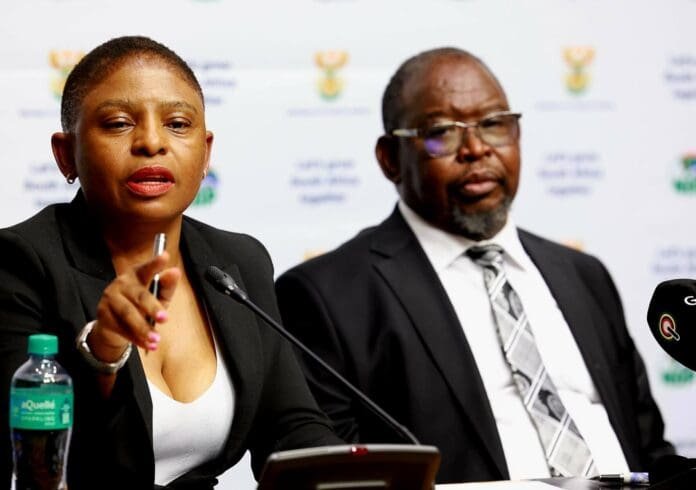Finance Minister Enoch Godongwana has pushed ahead with “the difficult decision” to propose a staggered value-added tax (VAT) increase in his reworked 2025 Budget Speech, marking a contentious shift in South Africa’s fiscal strategy.
The revised plan, announced on Wednesday, proposes raising VAT by 0.5 percentage points in the 2025/26 financial year and a further 0.5 percentage points in 2026/27, ultimately lifting the rate to 16% by April 2026.
The first hike, from 15% to 15.5%, is set to take effect on 1 May 2025.
VAT hike details: what it means for South Africans
The phased increase aims to bolster government revenue by R28 billion in 2025/26 and R14.5 billion in 2026/27, a significant reduction from the initially proposed R58 billion revenue target linked to a scrapped 2-percentage-point VAT hike. However, the move has drawn sharp criticism, particularly from lower- and middle-income households already strained by inflation.
- Immediate Impact: Consumers will face higher prices on most goods and services starting May 2025, with essentials like fuel and non-zero-rated food items absorbing the 0.5% hike.
- Long-Term Burden: By 2026, cumulative increases will push VAT to 16%, compounding living costs amid stagnant wage growth.
Tax bracket creep: a hidden blow to middle-income earners
In a controversial move, Treasury proposed no adjustments for inflation in personal income tax brackets for 2025/26, marking the third consecutive year without relief. This “bracket creep” effectively increases the tax burden as inflation pushes salaries into higher tax bands.
- Threshold freeze: The tax-free threshold remains at R95,750 for individuals under 65, unchanged since 2023.
- Medical tax credits: No inflation adjustments, further squeezing households reliant on private healthcare.
Fiscal consolidation and public wage bill
Godongwana defended the VAT hike as critical to fiscal consolidation, aiming to narrow the budget deficit from 5% of GDP in 2024/25 to 3.5% by 2027/28. However, critics argue the plan prioritizes public-sector wages over broader economic relief:
- R23.4 billion is allocated to fund the 2025 public-service wage agreement.
- Debt Stabilization: Government debt is projected to stabilize at 76.2% of GDP in 2025/26, with debt-service costs consuming 22 cents of every rand of revenue.
Social grants and relief measures
While austerity measures dominate, some relief targets low-income households:
- SASSA Grant extended: The Covid-era Social Relief of Distress (SRD) grant is extended to March 31, 2026 at a cost of R35 billion, supporting 19.3 million beneficiaries by 2028. SASSA Grants payments have seen significant increases, including R130 increase for older persons.
- Zero-rated essentials: Additional VAT exemptions for select food items.
- Fuel levies unchanged: No increases for the fourth consecutive year.
Political showdown looms
The VAT hike sets the stage for a parliamentary clash between the ANC and DA, the two largest parties in the Government of National Unity (GNU). The DA has vehemently opposed VAT increases and wealth taxes, while the ANC seeks cross-party support to pass the budget. Cabinet had not approved the budget prior to Godongwana’s speech, signaling unresolved tensions.
Other key takeaways
- Sin Taxes: Above-inflation hikes on alcohol and tobacco, effective immediately (12 March 2025).
- Sugar Tax: No increase, but the existing levy remains.
- NHI and Wealth Tax: No major funding announcements, leaving middle-class taxpayers bearing the brunt.
- Contingency Reserves: Treasury taps R5 billion from the Sarv contingency reserve.
#BudgetSpeech2025 in a glance
Godongwana’s budget walks a tightrope between fiscal discipline and political feasibility. While the staggered VAT hike avoids deeper austerity, it risks exacerbating inequality in a nation where 19.3 million rely on social grants. With parliament poised for a showdown,
South Africans brace for higher costs and a tax system that offers little reprieve to the squeezed middle class.

